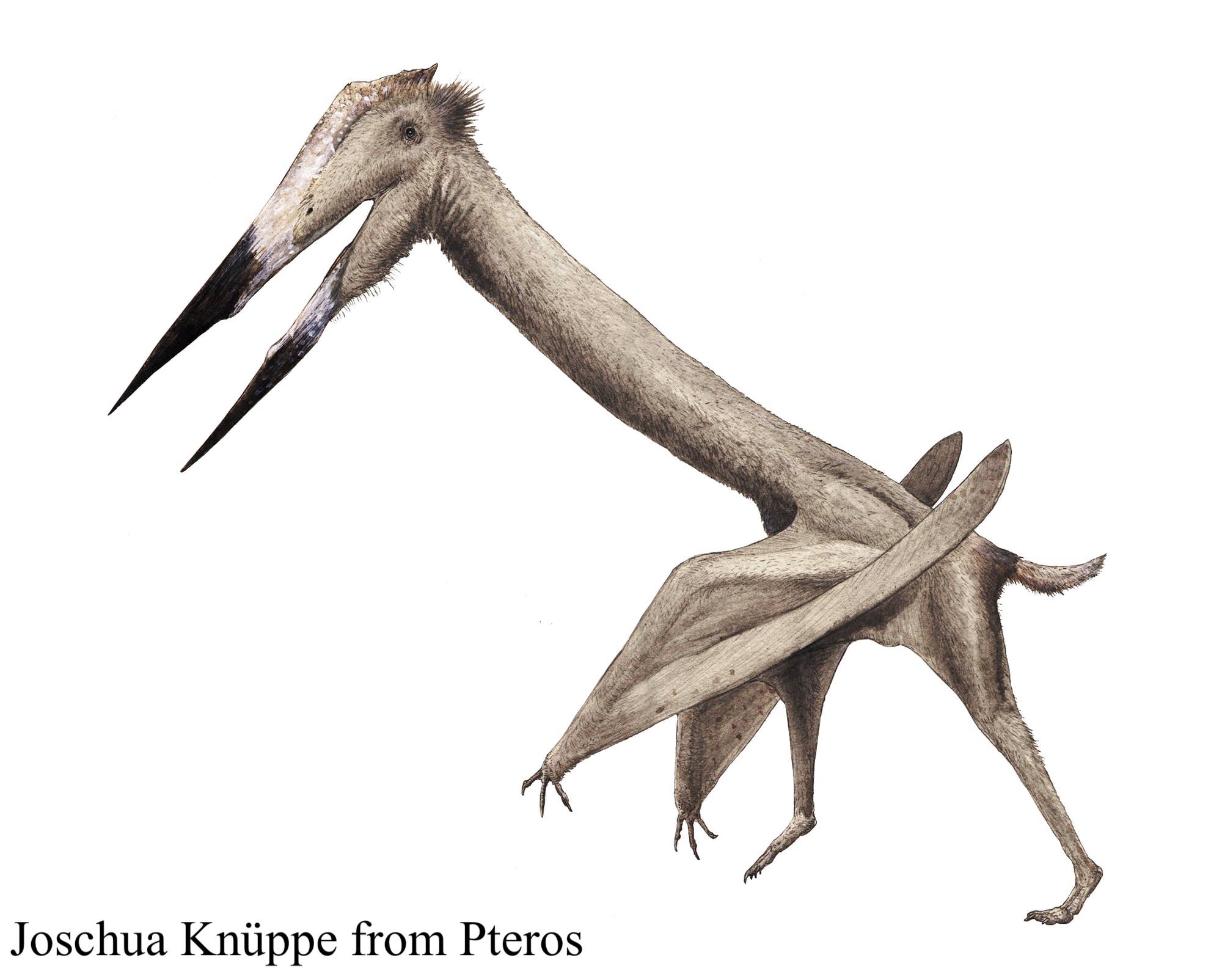Welcome to Alanqa

Name Definition
Alanqa comes from the Arabic word العنقاء (al-Anqā) which is a mythical female bird in Arabic mythology
Name Given By
Nizar Ibrahim et al. in 2010
Location
Kem Kem Beds of Morocco, Africa
Classification
Pterosauria, Pterodactyloidea, Azhdarchoidea, Azhdarchidae
Size
about 1.5 meters tall, around a 4-6 meter wide wingspan, ~200 lbs (90.7 kg)
Temporal Range
Cenomanian stage of the late Cretaceous, around 95 million years ago
Ecological niche
medium sized predator of smaller creatures as well as juvenile dinosaurs
Species/Sub Species
A. saharica
Diet
Alanqa would have been a predator of smaller creatures such as crustaceans and mollusks as well as amphibians as well as smaller reptiles
Introduction
Alanqa is a genus of azhdarchid pterosaurs that lived in Morocco during the late Cretaceous. Among the pterosaurs, Alanqa is one of the more significant finds, as it turns out pterosaurs are much less common in Africa than in most other areas. The main reason we don’t find as many pterosaur bones in Africa is most likely due to the conditions. These conditions were not suitable enough for the preservation of the fragile pterosaur remains, and even when well preserved, due to the hollow nature of pterosaur bones, they could still get crushed or in some way damaged during the fossilization process. Being originally described as a pteranodontid in 1999, three new jaw specimens discovered by Nizar Ibrahim and his team were described by them in 2010. These new specimens helped show that Alanqa was more similar to the azhdarchids, the long-necked and tall pterosaurs that started to appear in the Cretaceous. These jaws were slender and long, similar to the other slender-billed azhdarchids like Zhejiangopterus and Quetzalcoatlus, rather than the ones with the more robust bills like Hatzegopteryx. However, later in 2018, Nicholas Longrich and his colleagues classified Alanqa as a thalassodromid, though this idea is not generally supported that well. Because Alanqa is more widely accepted as an azhdarchid, scientists think that it would have hunted like a modern-day stork, picking and plucking at the ground to look for animals to eat, and this idea is also widely accepted for most of the other azdarchids too. Another fragmentary rostrum was discovered in 2015 that was attributed to the Alanqa genus. This partial rostrum seems to have its beak equipped with bony knobs, possibly to assist in visual display for mating, or it could have been an adaptation that Alanqa used to crush hard-shelled food like crustaceans or mollusks. Another thing that sets Alanqa apart from most other pterosaurs is its size, and while azhdarchids are known to be some of the biggest flying animals in the animal kingdom, Alanqa doesn't really live up to that expectation and only reached a wingspan of around 6 meters wide, unlike some of its bigger relatives with 10 meter wingspans, almost twice as much. Alanqa lived with a lot of African paleofauna including many species of fish and lungfish, amphibians, squamates, crocodylomorphs including Aegisuchus and Araripesuchus, as well as a large number of dinosaurs including Carcharodontosaurus saharicus, Deltadromeus agilis, an indeterminate dromaeosaur (most likely the undescribed “Moroccan raptor”), ornithischians including ornithopods, as well as some other well known theropods and sauropods. The site also contains a rather large amount of pterosaurs like Ornithocheirus and Afrotapejara, as well as some turtles.